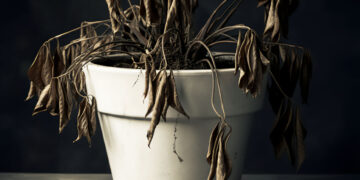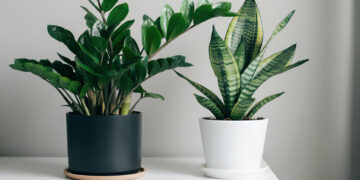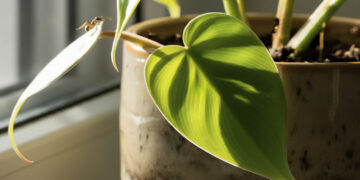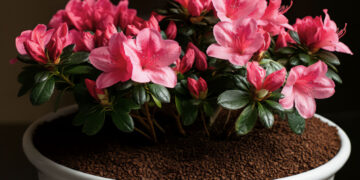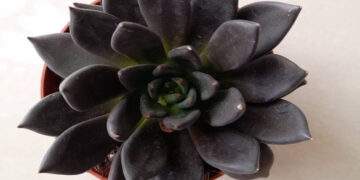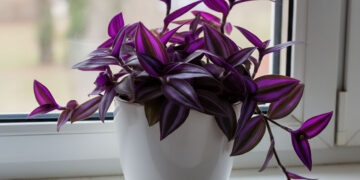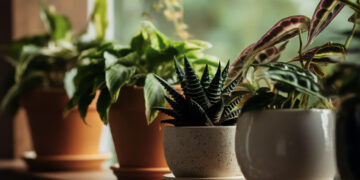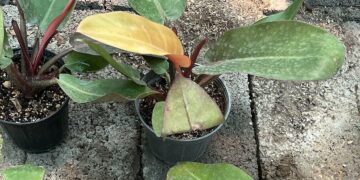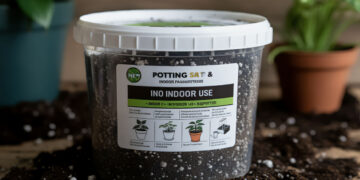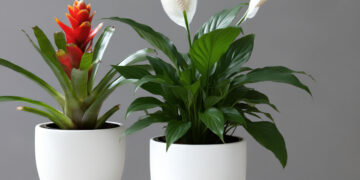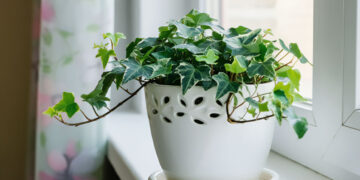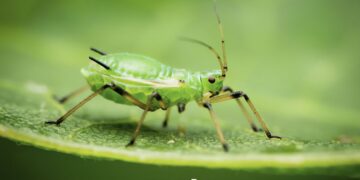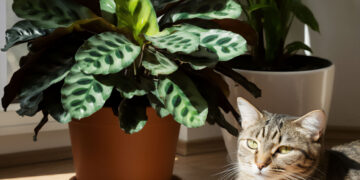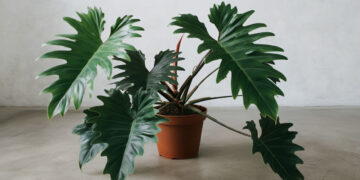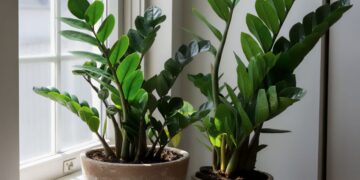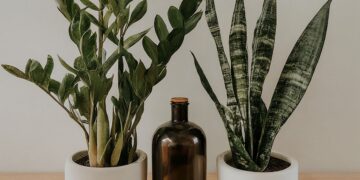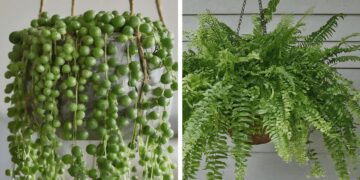It’s common to see people buy Purple Leaf Houseplants and later realize they can’t take proper care of them because they are either difficult to maintain or too time-consuming. Sadly, they end up losing the plant. these six are easy-to-care-for houseplants and are great options for beginners or those who don’t have much time.
1. African Violet (Saintpaulia)
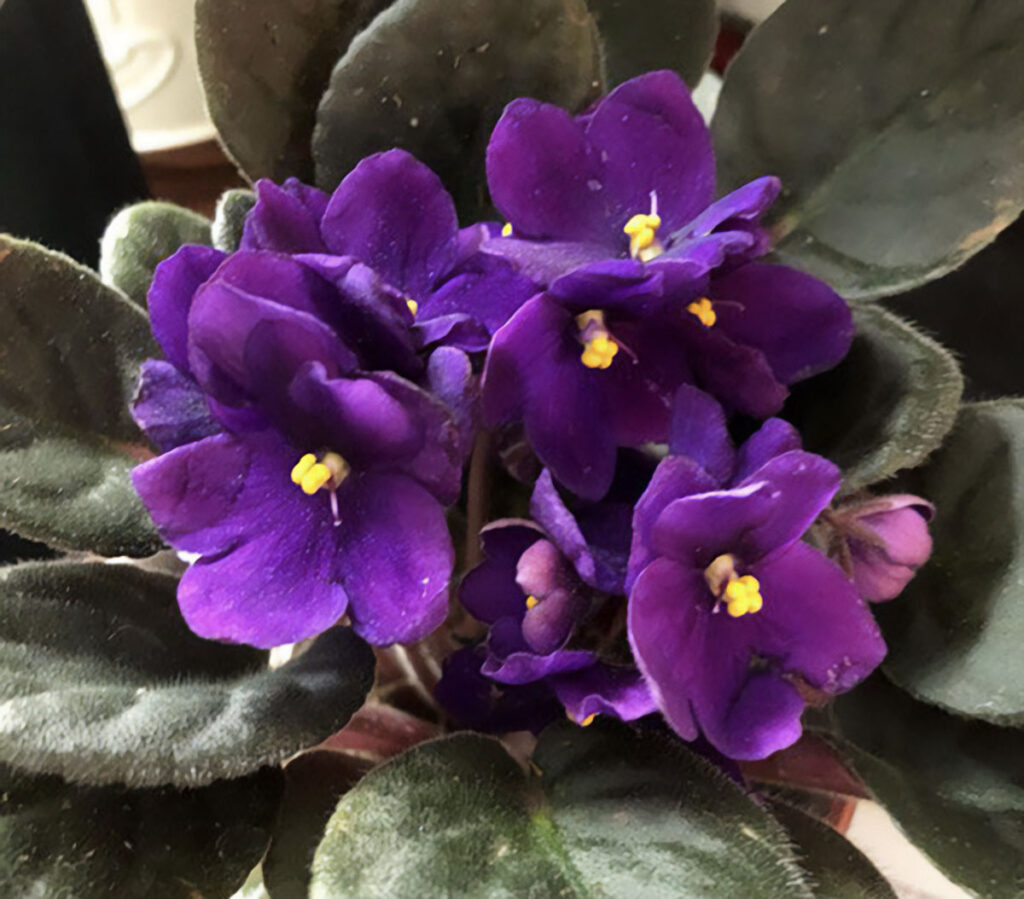
This blooming houseplant is one of my top choices in designs due to its delicate and beautiful flowers and ease of care. This plant prefers bright, indirect light but can also tolerate darker areas. It doesn’t need to be watered frequently; simply wait until the soil feels dry when you touch it before watering again. Just be careful not to get water on the leaves and flowers when watering.
Size and Growth Time: It typically grows to about 15 to 30 centimeters in height and width, reaching full size within a year.
Toxicity to Children and Pets: None
2. Wandering Jew (Tradescantia zebrina)
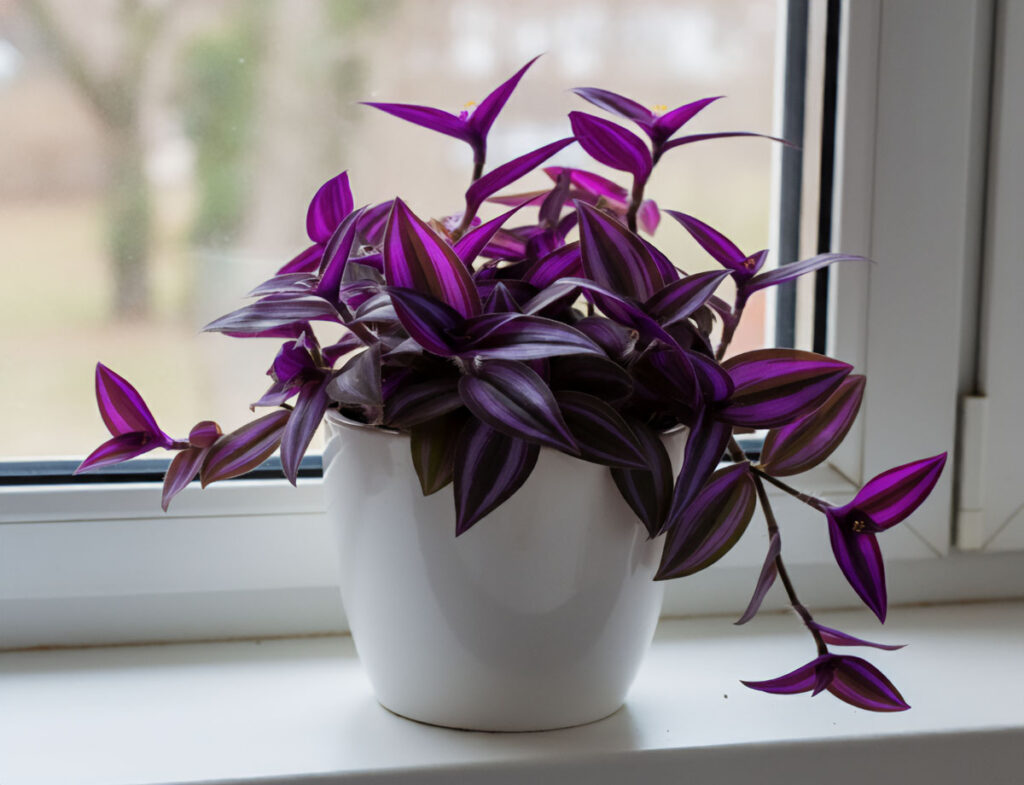
This plant is highly adaptable and grows quickly, adjusting to various light conditions, which is perfect for when you’re still figuring out the right place for it. Although it loves medium to bright indirect light, it can handle lower light, though its colors might fade a bit. For watering, it’s best to wait until the topsoil dries out. Even if you accidentally overwater or underwater, this plant is resilient and can adjust to different conditions.
Size and Growth Time: It can grow between 15 to 30 centimeters tall and spread up to 60 centimeters wide. It reaches full size within six months to a year, mainly when grown in hanging pots.
Toxicity to Children and Pets: Mildly toxic; it may cause skin irritation or mild digestive issues.
Tip: The Purple Heart (Tradescantia pallida), Tradescantia fluminensis Tricolor, and Wandering Jew are all from the same family almost similar care needs, making them excellent options as well.
3. Purple Passion (Gynura aurantiaca)
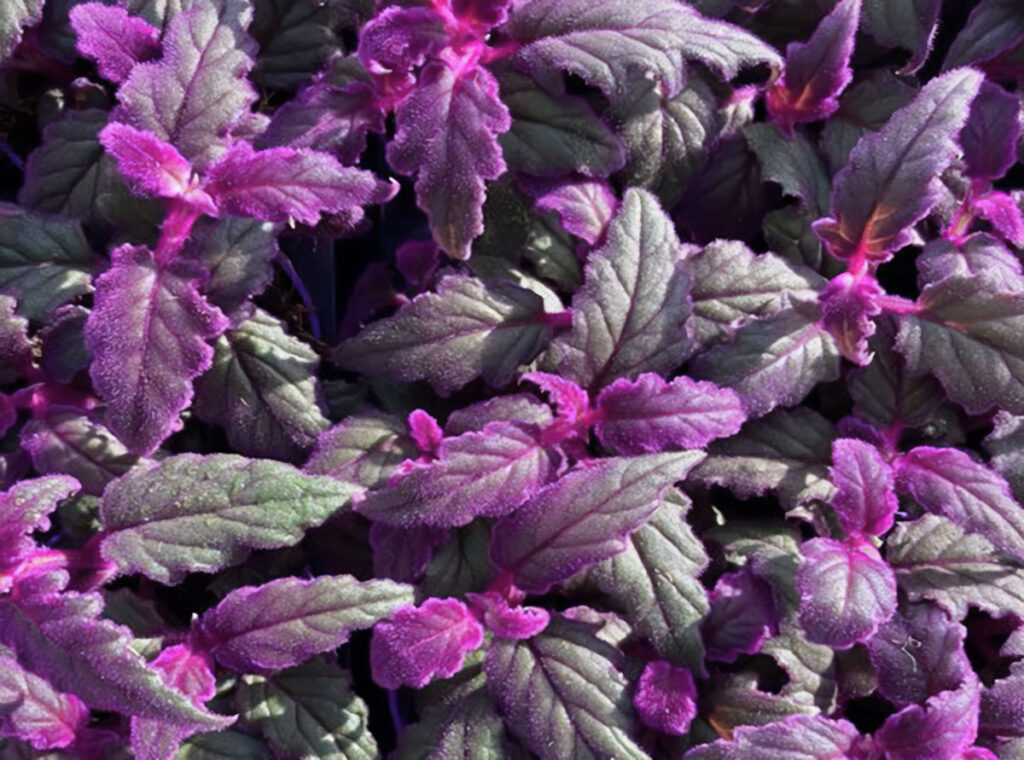
The velvety, purple leaves of this plant are eye-catching, and it grows in bright, indirect light, but it is also hardy in less-than-ideal conditions. I only water my plant when the top inch of soil dries out. This plant doesn’t require special attention, but if you want, using a houseplant fertilizer monthly can encourage better growth.
Size and Growth Time: grow up to 12-24 inches tall and 12 inches wide, reaching its full size in about a year.
Toxicity to Children and Pets: None
Tip: The Purple Velvet Plant (Gynura sarmentosa) from the same family also has easy care requirements.
4. Coleus (Solenostemon scutellarioides)
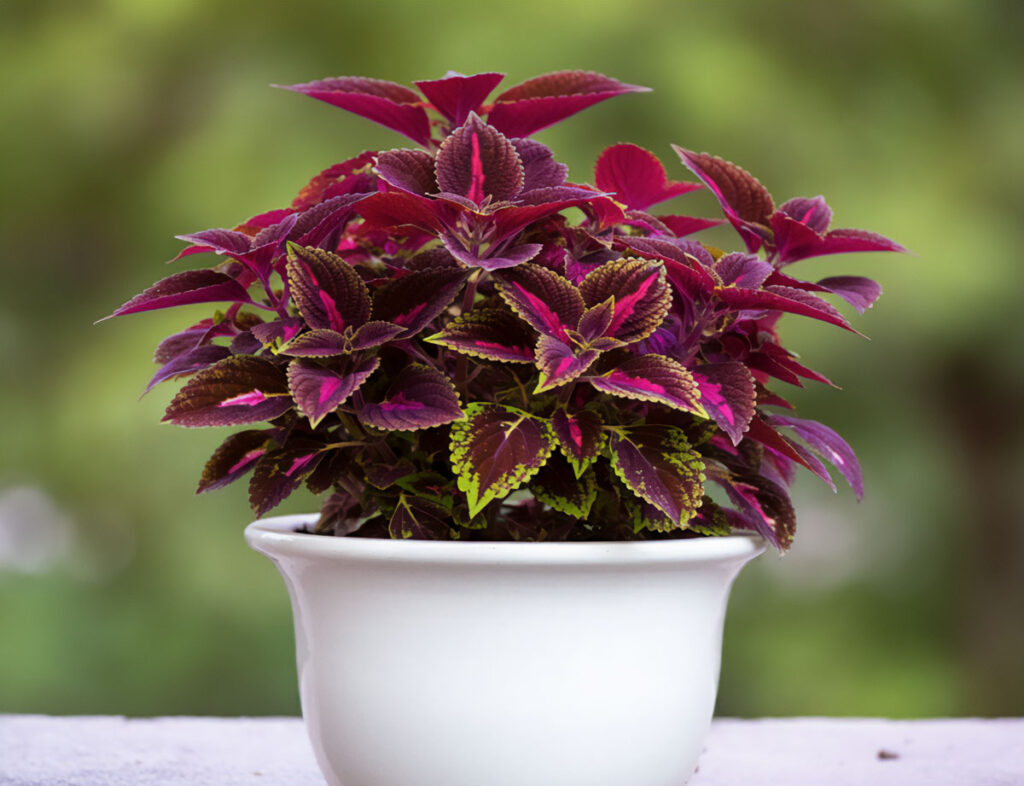
This colorful houseplant grows well in bright, indirect light but can tolerate shadier areas too. You’ll likely appreciate how easy it is to water—just wait until the topsoil dries out. If you forget to water it or overwater it once in a while, it won’t be a problem. Pruning is optional but helps keep the plant looking tidy.
Size and Growth Time: Coleus can grow up to 30 to 90 centimeters tall and spread between 30 to 60 centimeters wide. It will reach its full size within just a few months.
Toxicity to Children and Pets: Toxic to pets and mildly toxic to children.
5. Echeveria Black Prince
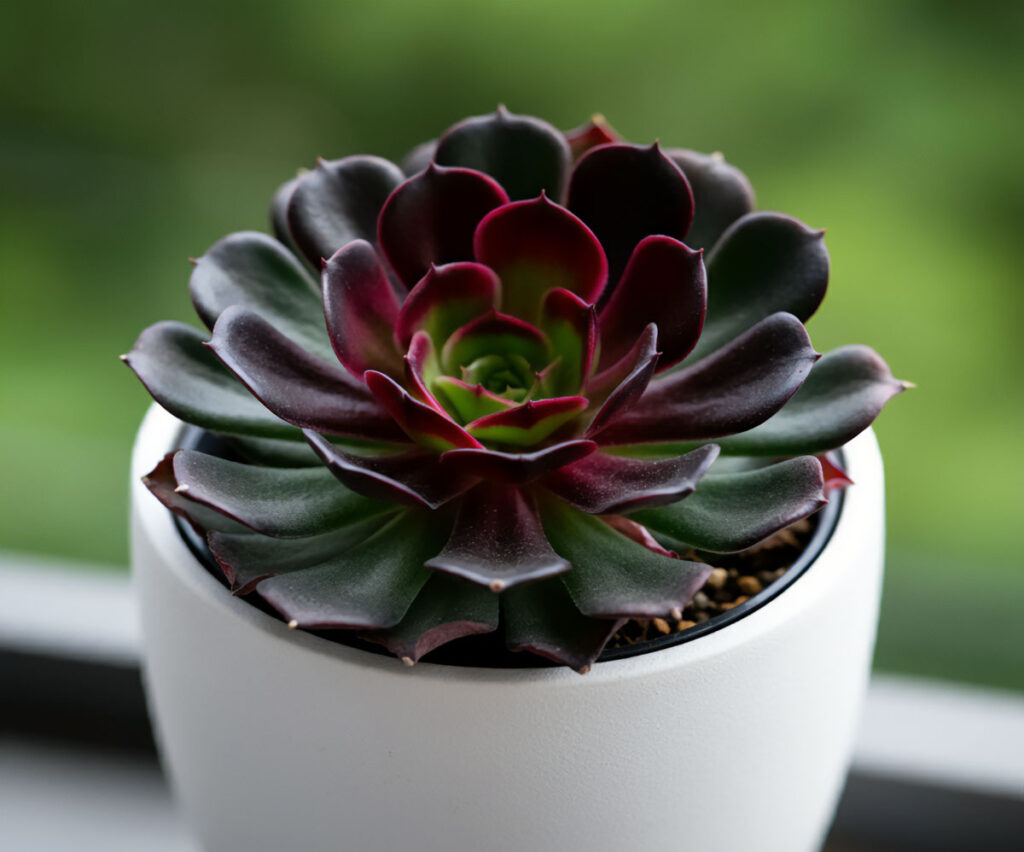
As a succulent, this houseplant thrives in bright, direct light and requires very little water. Only water it when the soil is completely dry, as this prevents root rot. You don’t need to worry about pruning or repotting often, as it grows slowly, making it perfect for beginners.
Size and Growth Time: This succulent grows up to 15 centimeters in height and width, but it takes several years to reach its full size.
Toxicity to Children and Pets: None
6. Bromeliad (Neoregelia Purple Star)
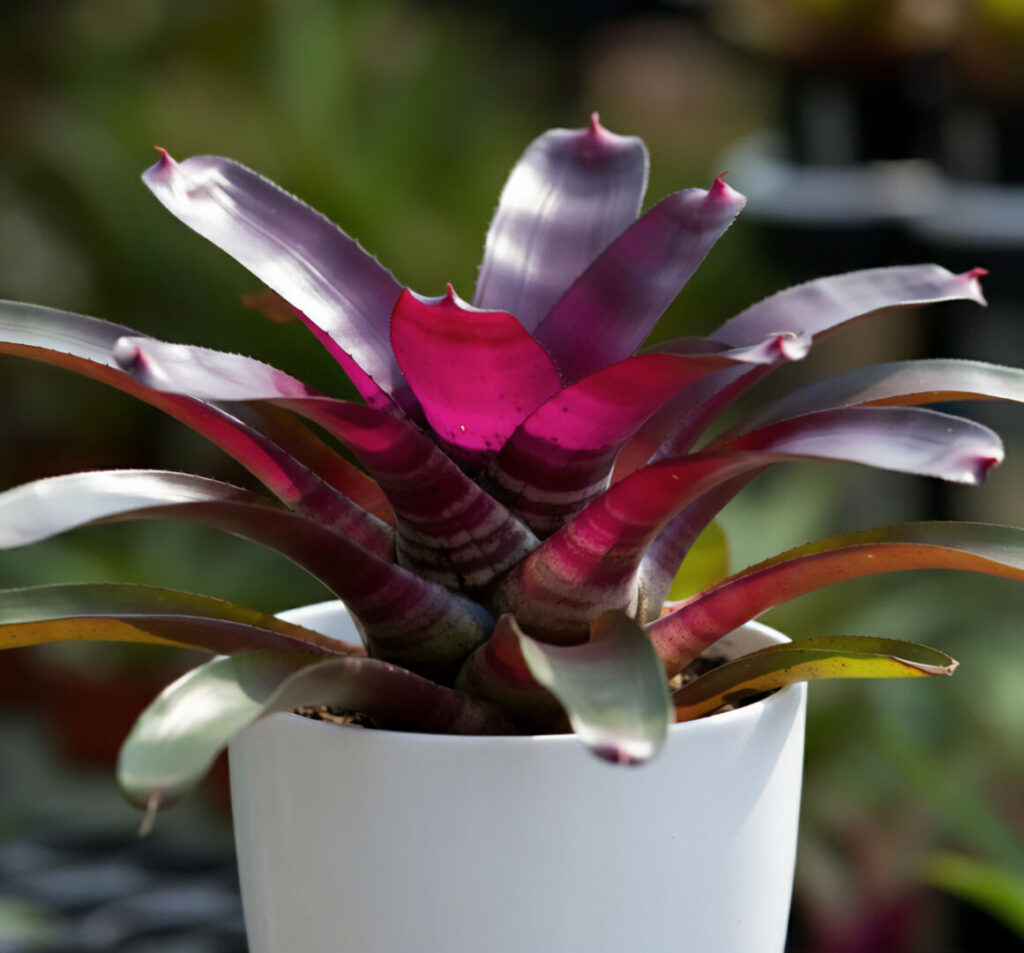
The deep purple leaves of this plant are stunning, and they grow well in bright, indirect light. For watering, add some water to the central cup and a bit on the soil. Remember not to water again until the water in the center has dried. Although its watering routine is a bit different, it’s still a fuss-free option.
Size and Growth Time: It grows to about 30 to 45 centimeters tall and wide, typically reaching full size in about a year.
Toxicity to Children and Pets: None
I hope it has been helpful, but if you still have any questions about purple indoor plants, feel free to ask me.
